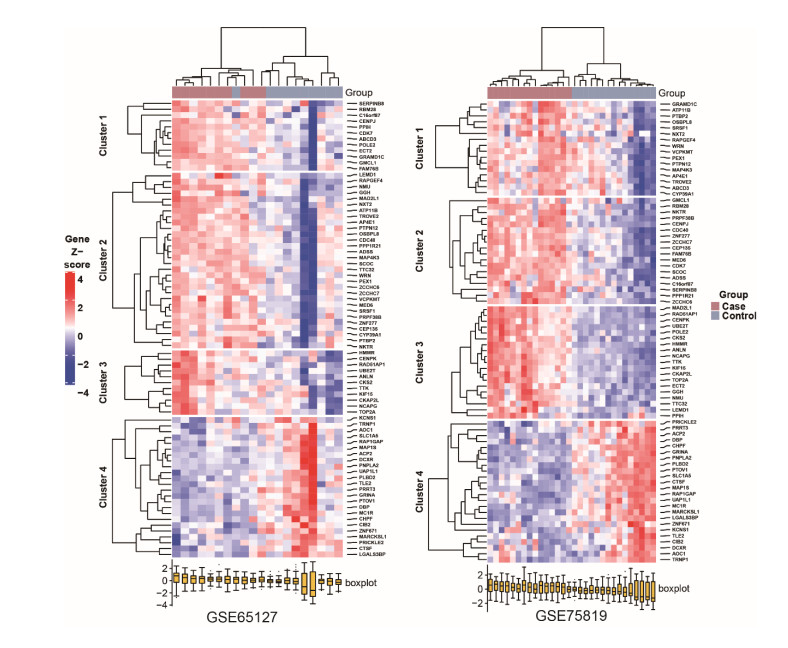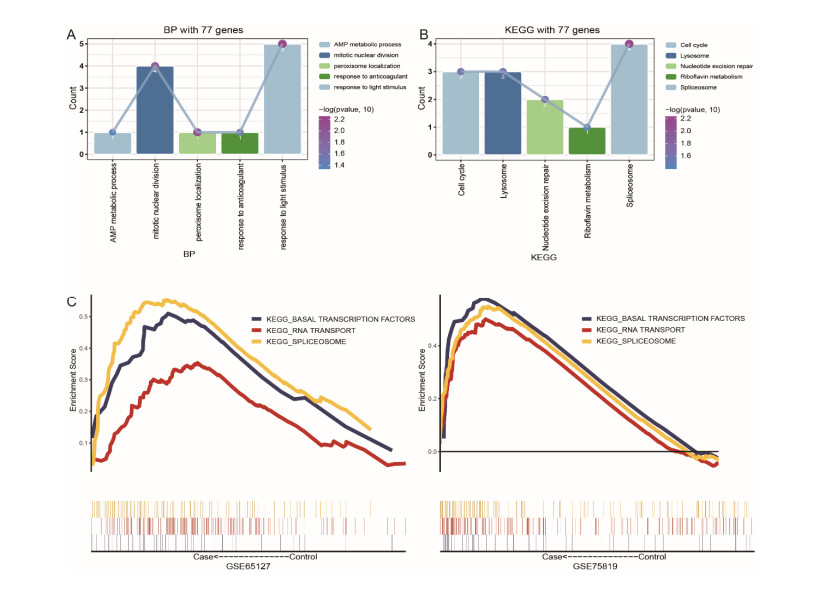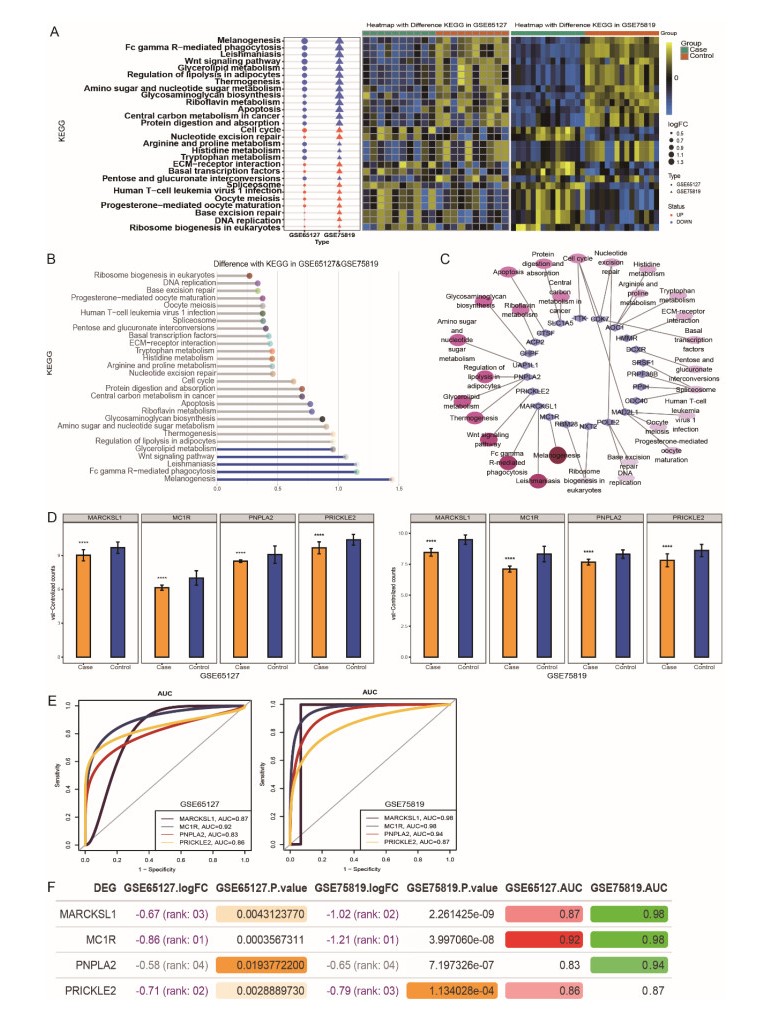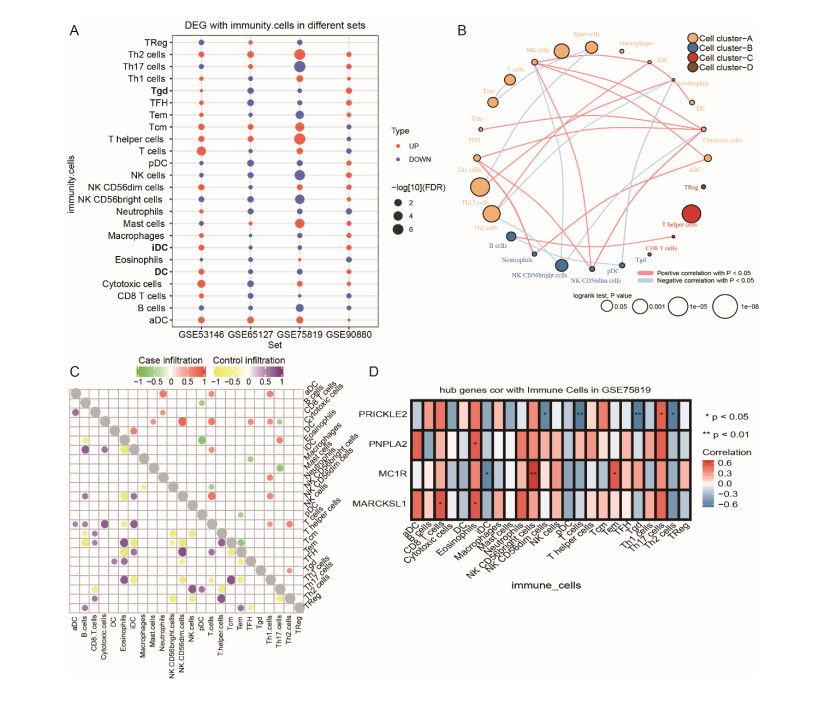|
[1]
|
A. Singh, V. Gotherwal, P. Junni, V. Vijayan, M. Tiwari, P. Ganju, et al., Mapping architectural and transcriptional alterations in non-lesional and lesional epidermis in vitiligo,
Sci. Rep.
,
7
(2017), 9860.
|
|
[2]
|
R. Dey-Rao, A. A. Sinha, Vitiligo blood transcriptomics provides new insights into disease mechanisms and identifies potential novel therapeutic targets,
BMC Genomics
,
18
(2017), 109.
|
|
[3]
|
V. N. Sehgal, G. Srivastava, Vitiligo: compendium of clinico-epidemiological features,
Indian J. Dermatol. Venereol. Leprol.
,
73
(2007), 149-156.
|
|
[4]
|
D. Chen, H. Tuan, E. Y. Zhou, D. Liu, Y. Zhao, D. Chen, et al., Quality of life of adult vitiligo patients using camouflage: A survey in a Chinese vitiligo community,
PLoS One
,
14
(2019), e0210581.
|
|
[5]
|
J. I. Silverberg, N.B. Silverberg, Vitiligo disease triggers: psychological stressors preceding the onset of diseas,
Cutis
,
95
(2015), 255-262.
|
|
[6]
|
A. Alkhateeb, P. R. Fain, A. Thody, A. Thody, D. C. Bennett, R. A. Spritz, Epidemiology of vitiligo and associated autoimmune diseases in Caucasian probands and their families,
Pigm. Cell Res.
,
16
(2003), 208-214.
|
|
[7]
|
S. W. Henning, D. Jaishankar, L.W. Barse, E. R. Dellacecca, N. Lancki, K. Webb, et al., The relationship between stress and vitiligo: Evaluating perceived stress and electronic medical record data,
PLoS One
,
15
(2020), e0227909.
|
|
[8]
|
P. E. Grimes, M. M. Miller, Vitiligo: Patient stories, self-esteem, and the psychological burden of disease,
Int. J. Womens Dermatol.
,
4
(2018), 32-37.
|
|
[9]
|
L. Raam, E. Kaleviste, M. Sunina, H. Vaher, M. Saare, E. Prans, et al., Lymphoid stress surveillance response contributes to vitiligo pathogenesis,
Front. Immunol.
,
9
(2018), 2707.
|
|
[10]
|
H. Xie, F. Zhou, L. Liu, G. Zhu, Q. Li, C. Li, et al., Vitiligo: How do oxidative stress-induced autoantigens trigger autoimmunity?,
J. Dermatol. Sci.
,
81
(2016), 3-9.
|
|
[11]
|
H. Atas, M. Gonul, Increased risk of metabolic syndrome in patients with vitiligo,
Balk. Med. J.
,
34
(2017), 219-225.
|
|
[12]
|
M. Rashighi, P. Agarwal, J. M. Richmond, T. H. Harris, K. Dresser, M. W. Su, et al., CXCL10 is critical for the progression and maintenance of depigmentation in a mouse model of vitiligo,
Sci. Transl. Med.
,
6
(2014), 223ra23.
|
|
[13]
|
J. Ocampo-Candiani, M. Salinas-Santander, V. Trevino, R. Ortiz-Lopez, J. Ocampo-Garza, C.N. Sanchez-Dominguez, Evaluation of skin expression profiles of patients with vitiligo treated with narrow-band UVB therapy by targeted RNA-seq,
An. Bras. Dermatol.
,
93
(2018), 843-851.
|
|
[14]
|
M. Rashighi, J. E. Harris, Vitiligo pathogenesis and emerging treatments,
Dermatol. Clin.
,
35
(2017), 257-265.
|
|
[15]
|
A. G. Tsadik, M. Z. Teklemedhin, T. Mehari Atey, M. T. Gidey, D. M. Desta, Public knowledge and attitudes towards vitiligo: A survey in Mekelle city, Northern Ethiopia,
Dermatol. Res. Pract.
,
2020
(2020), 3495165.
|
|
[16]
|
M. E. Ritchie, B. Phipson, D. Wu, Y. Hu, C. W. Law, W. Shi, et al., limma powers differential expression analyses for RNA-sequencing and microarray studies,
Nucleic Acids Res.
,
43
(2015), e47.
|
|
[17]
|
X. Shi, T. Huang, J. Wang, Y. Liang, C. Gu, Y. Xu, et al., Next-generation sequencing identifies novel genes with rare variants in total anomalous pulmonary venous connection,
EBioMedicine
,
38
(2018), 217-227.
|
|
[18]
|
L. Zhang, X. Shi, C. Gu, B. Chen, M. Wang, Y. Yu, et al., Identification of cell-to-cell interactions by ligand-receptor pairs in human fetal heart,
Biochim. Biophys. Acta Mol. Basis Dis.
,
1866
(2020), 165917.
|
|
[19]
|
P. Langfelder, S. Horvath, WGCNA: an R package for weighted correlation network analysis,
BMC Bioinf.
,
9
(2008), 559.
|
|
[20]
|
G. Yu, L. G. Wang, Y. Han, Q. Y. He, clusterProfiler: an R package for comparing biological themes among gene clusters,
OMICS
,
16
(2012), 284-287.
|
|
[21]
|
C. Gu, X. Shi, Z. Huang, J. Chen, J. Yang, J. Shi, et al., A comprehensive study of construction and analysis of competitive endogenous RNA networks in lung adenocarcinoma
.
Biochim. Biophys. Acta, Proteins Proteomics
,
1868
(2020), 140444.
|
|
[22]
|
G. Bindea, B. Mlecnik, M. Tosolini, A. Kirilovsky, M. Waldner, A. C. Obenauf, et al., Spatiotemporal dynamics of intratumoral immune cells reveal the immune landscape in human cancer,
Immunity
,
39
(2013), 782-795.
|
|
[23]
|
A. Taieb, Vitiligo as an inflammatory skin disorder: a therapeutic perspective,
Pigment Cell Melanoma Res.
,
25
(2012), 9-13.
|
|
[24]
|
J. C. Garcia-Borron, Z. Abdel-Malek, C. Jimenez-Cervantes, MC1R, the cAMP pathway, and the response to solar UV: extending the horizon beyond pigmentation,
Pigment Cell Melanoma Res.
,
27
(2014), 699-720.
|
|
[25]
|
E. I. Minder, J. Barman-Aksoezen, X. Schneider-Yin, Pharmacokinetics and pharmacodynamics of afamelanotide and its clinical use in treating dermatologic disorders,
Clin. Pharmacokinet.
,
56
(2017), 815-823.
|
|
[26]
|
X. Yuan, D. Meng, P. Cao, L. Sun, Y. Pang, Y. Li, et al., Identification of pathogenic genes and transcription factors in vitiligo,
Dermatol. Ther.
,
32
(2019), e13025.
|
|
[27]
|
N. A. Nagui, S. B. Mahmoud, R. M. Abdel Hay, M. M. Hassieb, L. A. Rashed, Assessment of gene expression levels of proopiomelanocortin (POMC) and melanocortin-1 receptor (MC1R) in vitiligo,
Australas. J. Dermatol.
,
58
(2017), e36-e39.
|
|
[28]
|
B. R. Kim, S. H. Lee, M. S. Park, S. H. Seo, Y. M. Park, Y. J. Kwon, et al., MARCKSL1 exhibits anti-angiogenic effects through suppression of VEGFR-2-dependent Akt/PDK-1/mTOR phosphorylation,
Oncol. Rep.
,
35
(2016), 1041-1048.
|
|
[29]
|
K. Aroni, S. Voudouris, E. Ioannidis, A. Grapsa, N. Kavantzas, E. Patsouris, Increased angiogenesis and mast cells in the centre compared to the periphery of vitiligo lesions,
Arch. Dermatol. Res.
,
302
(2010), 601-607.
|
|
[30]
|
P. Subramanian, S. P. Becerra, Role of the PNPLA2 gene in the regulation of oxidative stress damage of RPE,
Adv. Exp. Med. Biol.
,
1185
(2019), 377-382.
|
|
[31]
|
T. Cui, W. Zhang, S. Li, X. Chen, Y. Chang, X. Yi, et al., Oxidative stress-induced hmgb1 release frommelanocytes: a paracrine mechanism underlying the cutaneous inflammation in vitiligo,
J. Invest. Dermatol.
,
139
(2019), 2174-2184 e4.
|
|
[32]
|
T. Nagaoka, M. Furuse, T. Ohtsuka, K. Tsuchida, M. Kishi, Vangl2 interaction plays a role in the proteasomal degradation of Prickle2,
Sci. Rep.
,
9
(2019), 2912.
|
|
[33]
|
C. Niu, H. A. Aisa, Upregulation of melanogenesis and tyrosinase activity: potential agents for vitiligo,
Molecules
,
22
(2017), 1303.
|
|
[34]
|
S. Yu, C. E. Lan, H. S. Yu, Mechanisms of repigmentation induced by photobiomodulation therapy in vitiligo,
Exp. Dermatol.
,
28
(2019), 10-14.
|
|
[35]
|
T. Pillaiyar, M. Manickam, S.H. Jung, Downregulation of melanogenesis: drug discovery and therapeutic options,
Drug Discov. Today
,
22
(2017), 282-298.
|
|
[36]
|
S. Bournazos, J. V. Ravetch, Diversification of IgG effector functions,
Int. Immunol.
,
29
(2017), 303-310.
|
|
[37]
|
H. Weng, H. Huang, H. Wu, X. Qin, B. S. Zhao, L. Dong, et al., Mettl14 inhibits hematopoietic stem/progenitor differentiation and promotes leukemogenesis via mrna m
6
a modification,
Cell Stem Cell
,
22
(2018), 191-205 e9.
|
|
[38]
|
C. Regazzetti, F. Joly, C. Marty, M. Rivier, B. Mehul, P. Reiniche, et al., Transcriptional analysis of vitiligo skin reveals the alteration of wnt pathway: a promising target for repigmenting vitiligo patients,
J. Invest. Dermatol.
,
135
(2015), 3105-3114.
|
|
[39]
|
R. Speeckaert, N. van Geel, Vitiligo: an update on pathophysiology and treatment options,
Am. J. Clin. Dermatol.
,
18
(2017), 733-744.
|
|
[40]
|
K. Boniface, A. Taieb, J. Seneschal, New insights into immune mechanisms of vitiligo,
G Ital Dermatol. Venereol
,
151
(2016), 44-54.
|
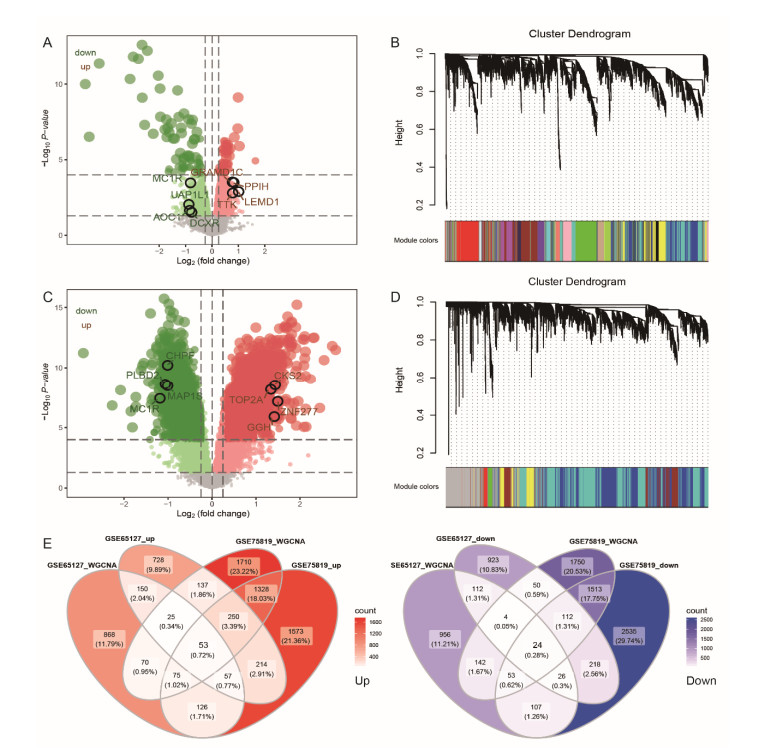









 DownLoad:
DownLoad:
